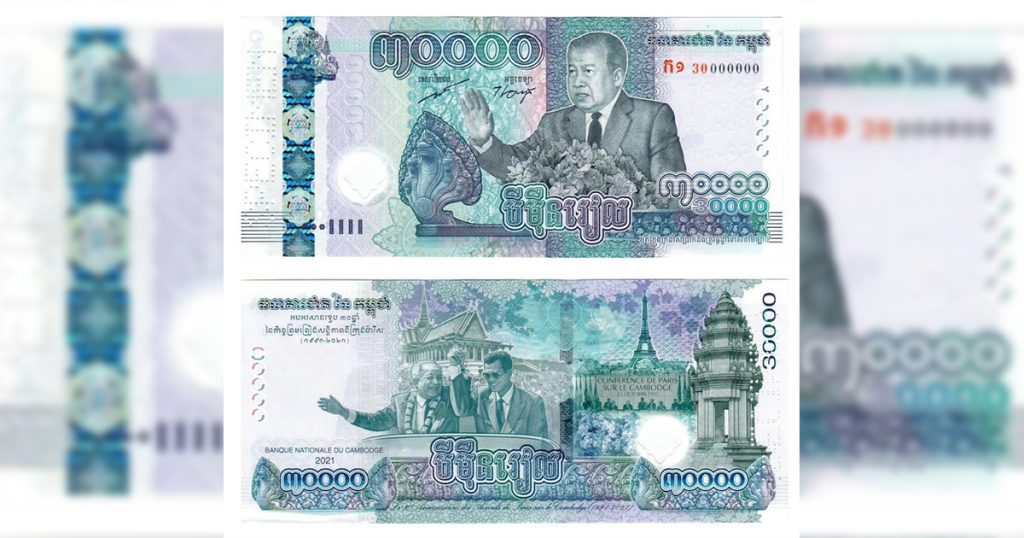Tomorrow marks the 30th anniversary of the 1991 Paris Peace Agreements. In 2019, the anniversary of the Paris Peace Agreements was removed as a national holiday but the 30th anniversary is being commemorated with a 30,000 riel bill. Like most Cambodian currency, it features the late King Father Norodom Sihanouk.

Notably, it is the first Cambodian currency that I’m aware of to feature Cambodia’s longstanding Prime Minister, Samdech Techo Hun Sen. Samdech is the highest rank of Khmer nobility, roughly translated as Lord. There are only 16 Samdechs in Cambodia. Techo is part of the Prime Minister’s full title, Samdech Akka Moha Sena Padei Techo Hun Sen which translates as “Lord Supreme Military Commander Hun Sen”.

The Cambodian-Vietnamese War
The 1991 Paris Peace Agreements marked the official end of the Cambodian-Vietnamese war. The Khmer Rouge regime had launched repeatedly attacks on Viet Nam and massacred over 3,000 Vietnamese citizens. As a University student, my introduction to the Khmer Rouge was visiting the site of the Ba Chúc massacre in southern Viet Nam. I had no idea at the time, as I wrote previously, that in a few years I would be living a few hours to the north in Prey Veng province, Cambodia. In response to these attacks, Viet Nam invaded Cambodia in 1978 alongside a force of Cambodians who had fled the Khmer Rouge. Viet Nam was backed by the Soviet Union at the time while China was backing the Khmer Rouge and invaded northern Viet Nam to protect their Khmer Rouge allies. As part of the peace agreements the Vietnamese military fully withdrew from Cambodia.
International Isolation of Cambodia
The Paris Peace Agreements also marked the end of the international isolation of Cambodia. The United States and Thailand had been aligned against the Khmer Rouge in the 1970s but in response to perceived Vietnamese expansionism shifted their positions. The Khmer Rouge were granted Cambodia’s seat at the UN and military aid to Khmer Rouge from China was tacitly permitted to flow through Thailand. After Vietnamese forces took Phnom Penh in 1979 the Khmer Rouge shifted to guerilla warfare.
The United States led an international embargo of Cambodia (then Kampuchea) at the time, seeing the newly instilled Cambodia government as a puppet of the Vietnamese government. Only India and the Soviet bloc recognized the Vietnamese backed Cambodian government. As I’ve noted before, Mennonite Central Committee was one of only five American NGOs active in Kampuchea during this period. The others were the American Friends Service Committee (also based in Pennsylvania), Church World Service, OxFam America, and World Vision. All five were Christian agencies which, I believe, led to them answering a higher calling than that of international politics.
United Nations Transitional Authority in Cambodia
The Paris Peace Agreements also established the United Nations Transitional Authority in Cambodia (UNTAC). This was the first UN peacekeeping missions after the end of the Cold War and the first ever occasion when the UN temporarily took over as the government as a state. UNTAC oversaw the change in government from the People’s Republic of Kampuchea to the Royal Kingdom of Cambodia and the first elections of the new government.
What does it mean?
There’s a lot of meaning behind everything here but it’s not the kind of analysis I can write about online. But if you’re interested in knowing more ask me about it next time we chat.
Thanks for the history lesson, very helpful!